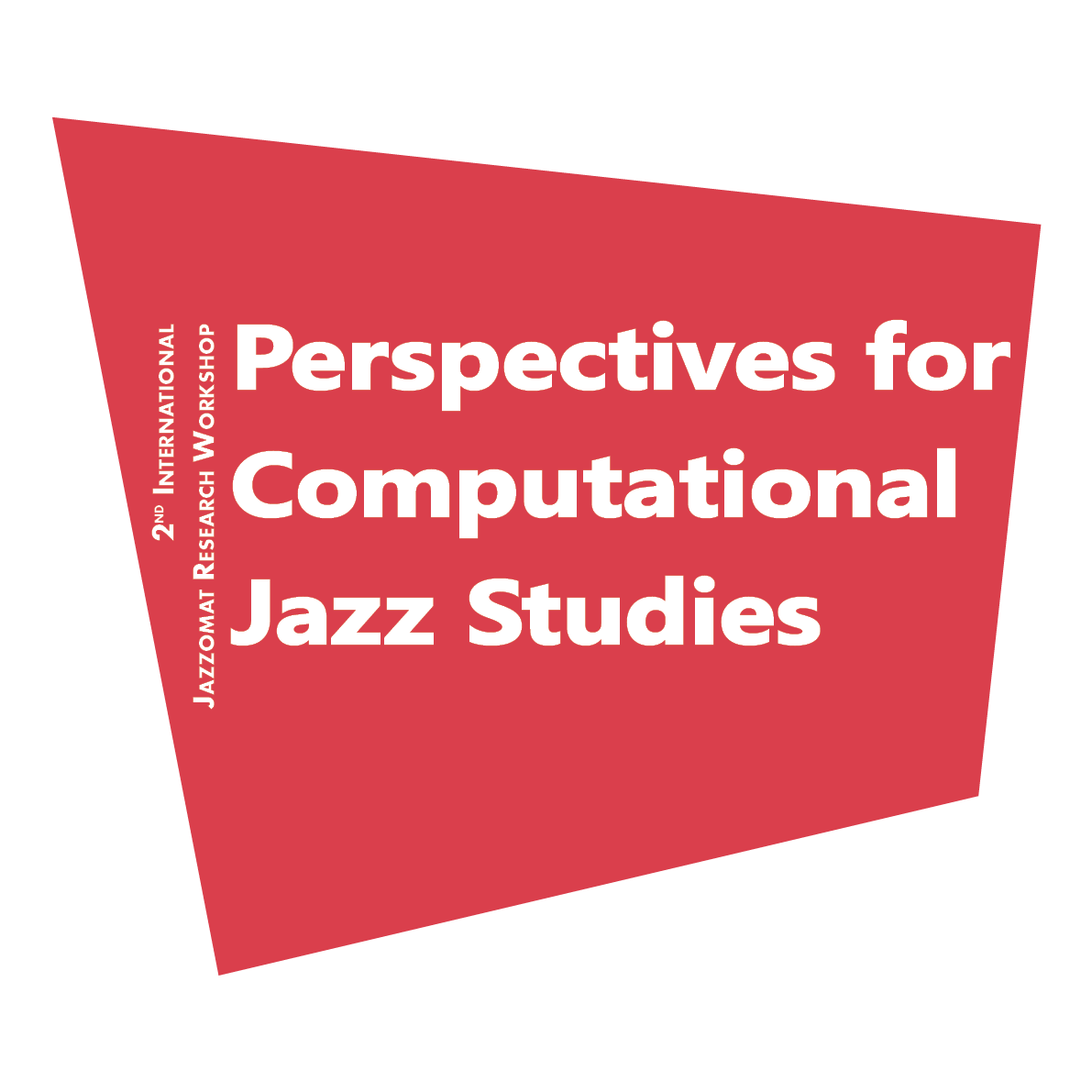
Second International Research Workshop 2016¶
The Jazzomat Research Project: Perspectives for Computational Jazz Studies¶
The Jazzomat Research Project is situated at the intersection of jazz research, cognitive psychology of creativity, and statistical music analysis. One central aim is to describe and discriminate styles of jazz improvisation by examining jazz solos of various artists and styles with the help of a large computer database and newly developed software tools. Moreover, we want to explore the cognitive foundations of improvisation, test theories about the cognition of creative processes, and evaluate and enhance pedagogical approaches towards jazz improvisation. Furthermore, the project generally aims at advancing statistical and computational methods of music analysis in various areas of music information retrieval.
The Jazzomat Research Project is funded by the German Research Foundation with a four and a half-year grant (September 2012 – March 2017). After four years of project runtime, the research workshop aims at presenting, sharing and discussing results of the project and at getting further theoretical and methodological input from international researchers with various areas of expertise. These include style analysis of jazz musicians and genres (session 1), psychology of creative processes (session 2), and music information retrieval, esp. audio-based music analysis and its interaction with symbolic music data (session 3).
Immediately before the Workshop, the first International Summer School on Computational Musicology will take place in Weimar (20th-22th September). The summer school will provide a comprehensive introduction into methods, applications, and potentials of computational musicology and music information retrieval and aims at students and young researchers. Results will be presented during the workshop.
The workshop is hosted by
University of Music “Franz Liszt” WeimarDepartment of Musicology Weimar-JenaCarl-Alexander-Platz 1hochschulzentrum am hornD-99425 Weimar, Germany
Funded by the German Research Foundation (DFG)
Free entrance, but please register via e-mail: jazzomat@hfm-weimar.de
Program¶
Thursday, 22th September 2016¶
20:00 Come Together, Köstritzer Schwarzbier Haus, Scherfgasse 4, 99423 Weimar
Friday 23th September 2016¶
9:00 Welcome & Introduction: The Jazzomat Project
Session I: Jazz Studies¶
- 9:05 Klaus Frieler, Weimar
Tracing the Creative Process. A Case Study of Bob Berg’s Solo on “Angles” (
Presentation)- 9:45 André Doehring, Graz
10:30 Coffee break
- 11:00 Wolf-Georg Zaddach, Weimar
Tenor Sax Colossus: Harmonic and rhythmic aspects of Michael Brecker’s and Chris Potter’s improvisation (
Presentation)- 11:45 Martin Pfleiderer
12:30 Lunch Break
13:30-14:30 Project presentations of the Summer School.
Session II: Music Psychology¶
- 15:00 Kai Lothwesen, Frankfurt and Klaus Frieler, Weimar:
The Ideational Flow Model (IFM). A new model for jazz improvisation (
Presentation)- 15:45 Martin Norgaard, Atlanta:
A method for identifying motor pattern boundaries in jazz piano improvisations (
Presentation)
16:30-17:00 Coffee Break
- 17:00: Andreas Kissenbeck, Munich
Exploring Harmony for Jazz Improvisation (Video of presentation)
- 17:45 Martin Pfleiderer and Wolf-Georg Zaddach,Weimar:
Ways of improvising. Insights from recording sessions and surveys with young jazz musicians (
Presentation)
18:30 Dinner Break
21:00 Jam Session, Kasseturm
Saturday 24th September 2016¶
Session III: Music Information Retrieval – Perspectives for Audio Analysis¶
- 9:00 Jakob Abeßer, Weimar/Ilmenau:
Who’s playing that solo? Recognizing jazz musicians by their “unique sound” (
Presentation)- 9:45 Sebastian Böck, Linz:
- 10:30 Christian Dittmar, Erlangen:
Tracking microtiming variations in the course of a jazz performance (
Presentation)
11:15-11:45 Coffee Break
- 11:45 Simon Dixon, London:
Music similarity and cover song identification: The case of jazz. (
Presentation)- 12:30 Stefan Balke, Erlangen:
Using domain knowledge for automatic structure analysis of jazz recordings (
Presentation)
13:00 Final Discussion: Perspectives for Computational Methods in Music Research
14:00 Farewell Note & End of Workshop
Abstracts¶
Friday 26th September 2016¶
Session I: Jazz Studies¶
Tracing the Creative Process. A Case Study of Bob Berg’s Solo on “Angles”¶
Klaus Frieler, University of Music “Franz Liszt” Weimar, Germany
In this presentation, a single solo of an eminent improviser (Bob Berg’s solo on “Angles” from 1993) will be analysed in a very extensive way. The rationale behind this enterprise is to use all analysis tools developed by the Jazzomat Research Project for an attempt to re-trace the creative processes behind a jazz solo improvisation. This comprises analysis on the symbolical as well as on the audio level. The first set will contain an investigation of low- and high level symbolical features, such as pitch and rhythm distributions, as well as derived aspects such as patterns, dramaturgical curves, implied harmonies and midlevel analysis. On the audio side, the analysis includes aspects of loudness, intonation, modulation and personal timbre. This analytic “grand picture” will be completed by aspects of the interaction of the soloist with the rhythm section. The final stage an attempt will be made to integrate all observed facts with biographical, stylistic, semantic and other extra-musical context.
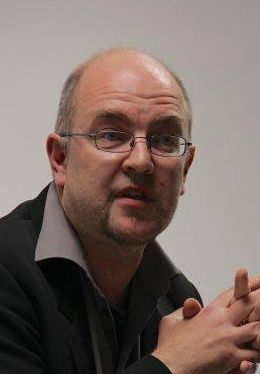
Klaus Frieler
Klaus Frieler studied physics and mathematics in Hamburg and graduated 1997 with a diploma in theoretical physics. After years working in the software industry, he finished his Ph.D. in Systematic Musicology in 2008 with a dissertation on mathematical models of melody cognition. From 2008 to 2012 he worked as a lecturer for Systematic Musicology at the University of Hamburg. Currently, he is a post-doc researcher with The Jazzomat Research Project. He also works as music expert witness, scientific consultant, lecturer and programmer. His main research interests are computational musical, modelling of music cognition, music creativity, music information retrieval and popular music research.
Movin’ out. The computer and changing ways of jazz analysis¶
Andre Doehring, Institure for Jazz Studies, Graz, Austria
The ways of producing statements about jazz’s sounding structure have been diverse: From musicological transcriptions and other forms of visualisation to the extraordinary work the jazzomat research project has been doing recently. In my paper I want to trace their benefits (and their annoyances as well) in several readings of hard bop recordings.

André Doehring
André Doehring is professor for jazz and popular music studies and head of the Institute for Jazz Studies in Graz (Austria). Previously, he has been assistant professor at the University of Gießen (Germany) where he received his doctorate in musicology and had studied musicology and sociology. He is member of the scientific boards of the German Society for Popular Music Studies and of the International Society for Jazz Studies.
Tenor Sax Colossus: Harmonic and rhythmic aspects of Michael Brecker’s and Chris Potter’s improvisation¶
Wolf-Georg Zaddach, University of Music “Franz Liszt” Weimar, Germany
Both, Brecker and Potter are considered to be two of the most important post-bop players after Coltrane. Brecker and Potter’s improvisations are understood as highly rooted in the tradition of jazz, mainly the bebop era. The analysis of Brecker und Potter transcriptions as part of the Weimar Jazz Database will question the harmonic and rhythmic complexity in regard to the context of rhythmic feel (swinging 8ths, straight 8ths, groove) and harmony (functional or modal). Further, the relationship to bebop as well as the individual ways of transgressing it will be shown.
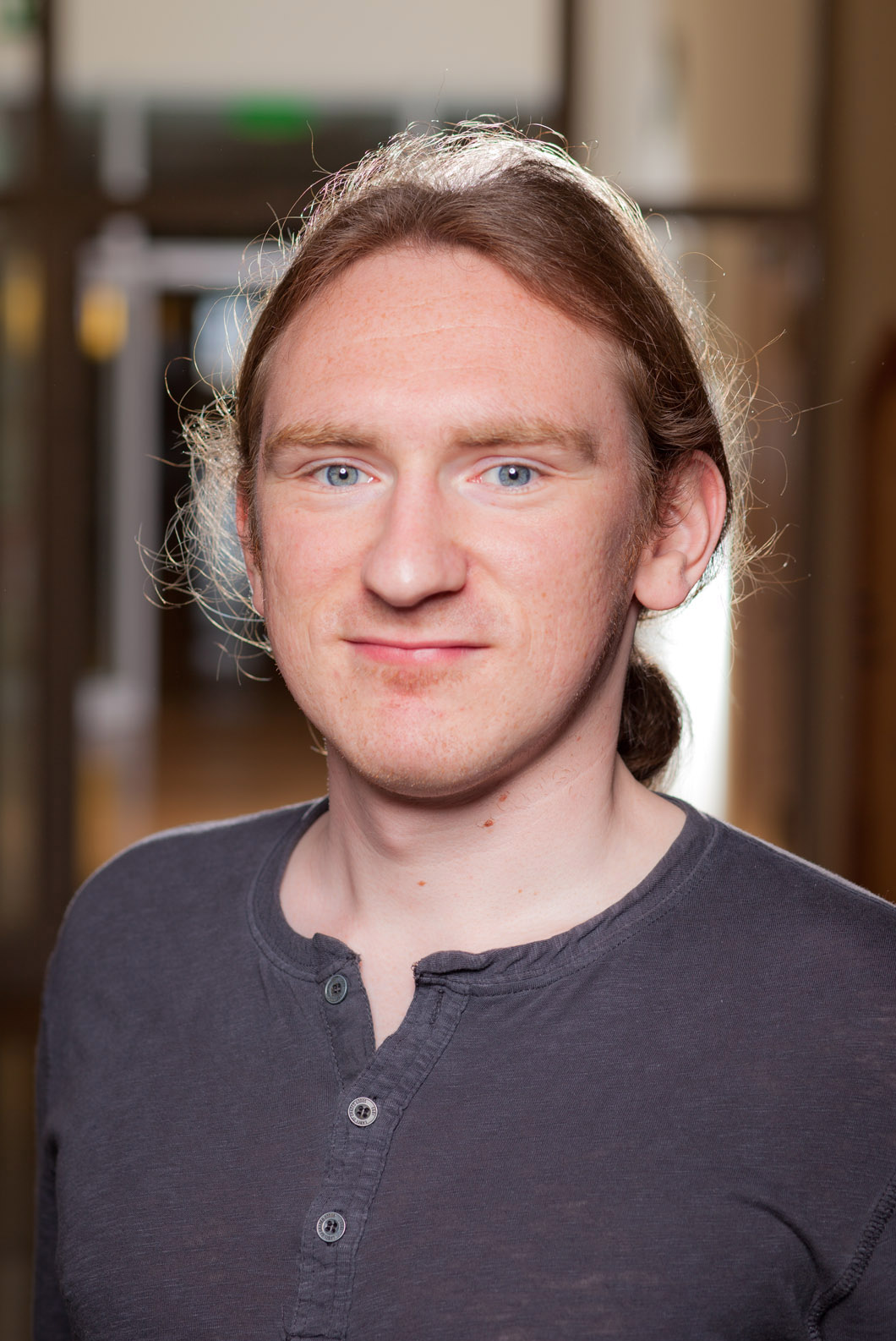
Wolf-Georg Zaddach
Wolf-Georg Zaddach studied musicology, arts administration, and history in Weimar and Jena, music management and jazz guitar in Prague, Czech Republic. After finishing his Magister Artium with a thesis about jazz in Czechoslovakia in the 50s and 60s, he worked as assistant professor at the department of musicology in Weimar. Since 10/2012 he works at the jazz research project of Prof. Dr. Martin Pfleiderer. Since 02/2014, he holds a scholarship by the German National Academic Foundation (Studienstiftung des deutschen Volkes) for his Ph.D. about heavy and extreme metal in the 1980s GDR/East Germany. He frequently performs live and on records as a guitarist.
Comparative studies of jazz improvisations¶
Martin Pfleiderer, University of Music “Franz Liszt” Weimar, Germany
Jazz musicians regularly improvise several solos on the same composition and/or the same formal and harmonic structure. On the one hand, the same musician records the same piece several times, either during the same recordings session (“alternate takes”) or at completely different times. On the other hand, different musicians improvise over the same composition, e.g., jazz standards such as “Body and Soul” or a 12-bar blues, either during different recording sessions or at one and the same recording. I will present and discuss results of comparative analyses of improvisations in regard to several musical features, to pattern vocabulary and to usage of different types of mid-level units. All solos are taken from the Weimar Jazz Database and are analysed with the help of MeloSpyGUI software. This comparative approach leads to new insights into individual styles of improvisation as well as into the infinite art of improvisation.
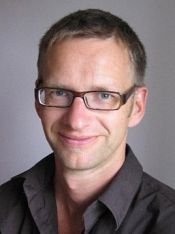
Martin Pfleiderer
Martin Pfleiderer studied musicology, philosophy, and sociology at Gießen university, and received a doctorate there in 1998. From 1999 to 2005 he was assistant professor for Systematic Musicology at Hamburg University where he received his postdoctoral lecture qualification (habilitation) in 2006 with research on rhythm in jazz and popular music. In 2009 he became professor for the history of jazz and popular music at the Liszt School of Music in Weimar. Since 2012 he is principal investigator in the Jazzomat Research Project funded by the German Research Foundation. He has also performed as jazz saxophonist with various groups.
Friday 25th September 2014¶
Session II: Music Psychology¶
The Ideational Flow Model (IFM). A new model for jazz improvisation¶
Kai Lothwesen, University of Bremen / University for Music and Performing Arts, Frankfurt, GermanyKlaus Frieler, University of Music “Franz Liszt” Weimar, Germany
We introduce a new model of creative thinking in musical improvisation. Focusing on jazz, we want to open a perspective on how musicians might be able to plan ahead of time during real-time performance. We assume that thinking in schemes on a meso-level of musical form helps to reduce cognitive load during improvisation. The Ideational Flow Model of Jazz Improvisation hence proposes the application of formulae or clichés as a way to enable the real-time creation of meaningful musical structures. In addition to other approaches, the IFM considers gestalt-like phenomena to be of major importance for future planning during improvisational processes: shapes of musical entities (licks, lines, …) may provide basic orientations in imagining structural development while their particular realisation (regarding melodic and harmonic features) may be conceived by making decisions ‘on the fly’. We therefore promote the ideational flow model as a explanatory strategy for enabling continuous idea generation during musical improvisation, where ‘ideas’ are representations of musical gesture-like forms that provide frames for actual note-to-note-events.
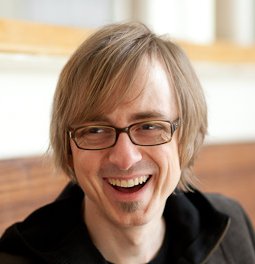
Kai Lothwesen
Kai Lothwesen studied musicology, music education and sociology at University of Gießen and received his PhD in systematic musicology at University of Hamburg with a thesis dealing with relations of European Free Jazz and contemporary classical music. A cumulative habilitation sketching transdisciplinary ways of music research was accepted and granted with the postdoctoral lecture qualification in 2014 at Univesity of Siegen. Since 2008 he works as assistant professor at the University for Music and Performing Arts in Frankfurt, and since 2014 as deputising professor for systematic musicology at University of Bremen. His main research interests are cognitive and social processes of musical improvisation and creativity, sociohistorical and stylistic aspects of popular music, sociopsychological uses of (popular) music, and contemporary musical cultures.
A method for identifying motor pattern boundaries in jazz piano improvisations¶
Martin Norgaard, Georgia State University, Atlanta, Georgia, USA
According to Pressing’s (1988) prominent theoretical framework, musical improvisations consist of concatenated motor patterns. Accordingly, boundaries between these patterns should exist in extant improvisations. Schmidt (1975) defined Generalized Motor Patterns (GMPs) as an abstract movement structure in which the proportions of relative timing and relative force are constant. Later research identified the boundary between two GMPs using correlations among times of kinematic landmarks within a longer lever movement (Park & Shea, 2005). Here I adapted this idea to musical improvisation. I analyzed a corpus of 1000 choruses of jazz blues improvisations played by 25 advanced jazz pianists on a weighted midi keyboard. Thirty-six different five-note patterns were identified with identical rhythm and pitch content that occurred 10 times or more in the corpus. I then ran correlations of relative force and relative timing between the first note and each of the following six notes to determine if subsequent notes were part of the same motor pattern. Six of the 36 patterns showed strong correlations in both force and timing indicating that most of the 25 participants used stored motor patterns to execute these patterns. Interestingly, all of these patterns were either ascending or descending eighth note chromatic lines. I am currently analyzing live midi recordings of multiple solos from one pianist. I hypothesize that this corpus will contain a higher number of idiosyncratic motor patterns specific to this player. This research has the potential to validate Pressing’s framework by showing that repeated musical patterns often are played with the same GMP.
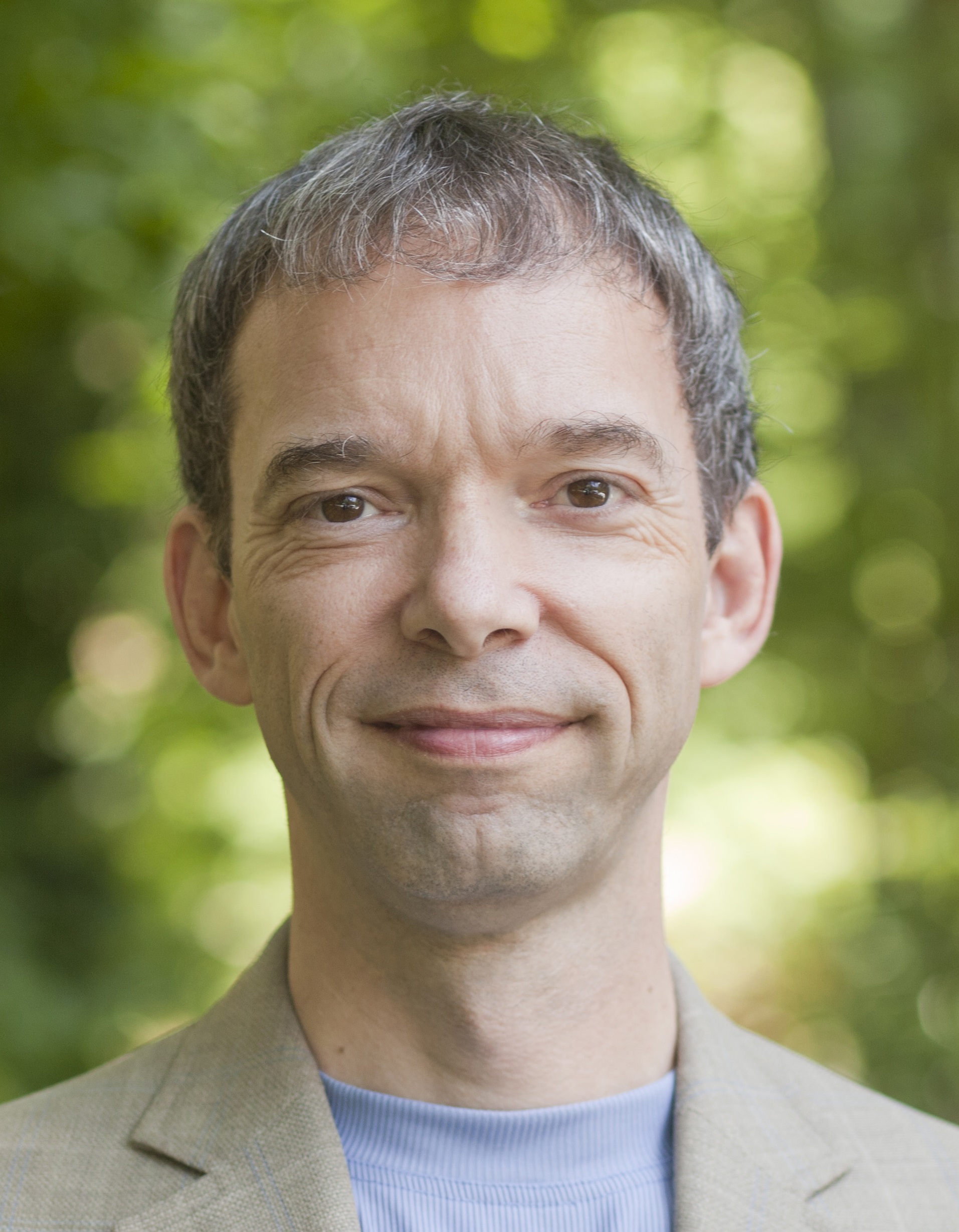
Martin Norgaard
Martin Norgaard is Assistant Professor of Music Education at Georgia State University in Atlanta where he is collaborating with faculty in mathematics, computer science, linguistics, and physics to investigate the cognitive processes underlying improvisation. He received the Dean’s Early Career Award in recognition of “outstanding work” as a faculty member of Georgia State University and was just appointed associate faculty of the Neuroscience Institute. He was the guest editor of a recent theme issue of Psychomusicology, Music, Mind, and Brain based on papers from the Improvising Brain Symposium. His research appears in the Journal of Research in Music Education, The International Journal of Music Education (in press), and the interdisciplinary journal Music Perception. He is the author of ten jazz string method books for Mel Bay Publications and the composer of several string orchestra pieces for The FJH Music Company and Alfred Music Publishing.
Exploring Harmony for Jazz Improvisation¶
Andreas Kissenbeck, University of Music and Performing Arts Munich / University of Münster, Germany
Our perceptual apparatus tries to derive reference systems out of pitches that penetrate our ears. For example, if a melody moves over a certain time period within a pentatonic, diatonic or even an exotic scale, such supply of tones is established as a reference system, which takes effect as a reference point for the following music. Such reference systems are, especially in tonal music, varied and are hierarchically inter-related (e.g. chromatic scale, key, chord, pitch set). Understanding such reference systems becomes more complex when sounds come into play that do not belong to the reference system. How can it be, for instance, that in piano music in the key of C major, a whole lot of black keys may appear without attacking the key of C? To make obvious assumption that this inevitably attacks the reference system only proves wrong, just like assuming that reference systems are formed from tones that occur particularly frequently. Thus, within major-minor tonal music, e.g. accidental tones could appear in large numbers, without undermining the key. Here, these tones connect in various ways with the tonality (or generally with a reference system) and thereby produce very different effects. Music theorists and composers - ultimately both researchers - created a conceptual tool for such sound phenomena, which literally taken and thought through in a very pragmatic way, meets the cognitive psychological testimony. To demonstrate this, the following concepts will be highlighted and their scope of practical experiments illustrated: Option, Leading Note, Alteration, Mixture, Strut Effectiveness, Internal Fifth Range, Chord. Based on that, a deeper understanding of the principle of operation of reference systems will arise.

Andreas Kissenbeck
Born in 1969 in Bonn (Germany). Studied mathematics, sport and education science at the universities in Berlin and Ratisbona. Then scholarship and studies in Jazzpiano at the University of Music Würzburg. Later PhD in musicology at the university Würzburg. Pianist/Hammond organist, composer and arranger. 2002 Jazz Price of the Süddeutsche Zeitung. 2006 Next Generation Award of Germany’s biggest jazz magazine Jazz Thing. Played inside and outside of Germany with internationally renowned artists such as Malcolm Duncan, Greg L. May, Benny Bailey, Bobby Shew, Jiggs Whigham, Tony Lakatos, Peter Weniger, Torsten Goods. Lecturer at the universities in Munich and Münster.
Ways of improvising. Insights from recording sessions and surveys with young jazz musicians¶
Wolf-Georg Zaddach, Martin Pfleiderer, University of Music “Franz Liszt” Weimar, Germany
Improvisation still seems to be a rather mysterious process. While there are established methods of music analysis and jazz pedagogy to examine individual improvisational competences, the instantaneous process of inventing new melodic lines is hard to reveal. Following this, we ask: How do young jazz musicians study and practice improvisation in regard to improvisational strategies and self-awareness? Therefore, we invited six young jazz musicians in Weimar and Berlin to improvise along with play-along recordings of three jazz standards (“Freddie Freeloader”, “Good Bait”, and “Impressions”). Immediately afterwards they listened to the recordings and commented on segments of their improvised solos and what they “had in mind” while playing. This was supplemented by an interview of the musicians concerning their general approach to jazz improvisation, their training biography and their current strategies of practicing and improvising. Finally, we advised the musicians to segment their solos and to categorize the segments according to concept of mid-level analysis (MLA) that we recently proposed (see Frieler, Pfleiderer, Abeßer & Zaddach (2016). Midlevel analysis of monophonic jazz solos. A new approach to the study of improvisation. Musicae Scientiae 20, 2) in order to evaluate the validity of the MLA approach and underlying assumptions concerning cognitive processes of improvisation. We transcribed the interviews as well as the solos. Therefore, we are able to compare both, the surveys and the transcriptions, with computational analysis in regard to melodic, harmonic and rhythmic features as well as to mid-level units and the overall dramaturgy. First results show a variety of attitudes and approaches to improvisations, but many commonalities among the musicians, too.
Saturday 25th September 2016¶
Session III: Music Information Retrieval – Perspectives for Audio Analysis¶
Who’s playing that solo? Recognizing jazz musicians by their “unique sound”¶
Jakob Abeßer, University of Music “Franz Liszt” Weimar / Fraunhofer IDMT Ilmenau, Germany
Jazz aficionados can recognize the performing musician often instantaneously from the first few notes in a solo. They are capable to immediately recognize - among other performative aspects like melodic and rhythmic features - the overall “sound” of the soloist. This concept naturally includes both the way, how the musician shapes the tones using dynamics, articulation, and various playing techniques, as well as their characteristic timbre. Using high-quality solo transcriptions included in the Weimar Jazz Database, we will first analyze to what extent automatically extracted timbre features, which characterize different aspects of the sound of individual tones in a solo, allow for an automatic classification among different artists. The focus of this study will be on trumpet and tenor and alto saxophone solos. In the second part, we will analyze, which timbre features are most characteristic for individual artists in comparison to their instrument peers. The automatically extracted idiosyncrasies will be discussed in detail from a musicological perspective. In the third part, we will present the results of a listening test in which we further investigated, to what extend human listeners are capable to distinguish, whether pairs of isolated tones come from the same or from different artists.
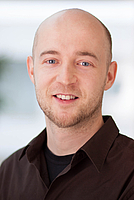
Jakob Abeßer
Jakob Abeßer studied computer engineering at Technischen Universität Ilmenau and graduated in 2008. Since 2008, he worked as a Ph.D. student at the Semantic Music Technologies group at the Fraunhofer Institute for Digital Media Technology (IDMT). In 2010, Jakob Abeßer completed a four month research stay as visiting Ph.D. student at the Finnish Centre of Excellence in Interdisciplinary Music Research in Jyväskylä, Finland. In December 2013, he submitted his Ph.D. thesis entitled “Automatic Transcription of Bass Guitar Tracks applied for Music Genre Classification and Sound Synthesis”. Ever since, he works as a research assistant at IDMT as well as the Liszt School of Music in Weimar, where he participates in the Jazzomat Research Project. His main research interests are music information retrieval, automatic music transcription, musical instrument recognition and modeling, as well as music performance analysis.
Automatic beat and downbeat tracking in jazz recordings¶
Sebastian Böck, Department of Computational Perception, Johannes Kepler University (JKU), Linz, Austria
Automatic analysis of rhythmic structure in music pieces has been an active research field since the 1970s. It is of prime importance for musicology and tasks such as music transcription, automatic accompaniment, expressive performance analysis, music similarity estimation, and music segmentation. In this talk I will give an overview of the state-of-the-art in computational rhythm description systems, with a special focus on beat and downbeat tracking. These systems are usually built, tuned, and evaluated with music of low rhythmic complexity. Based on Jazz recordings, I will analyse the capabilities of these systems, investigate their shortcomings, and discuss challenges and ideas for future research with regard to music of higher complexity. All performance analysis and rhythm transcription tools used during this talk are available as open source software, hence all participants can use them for their own work.
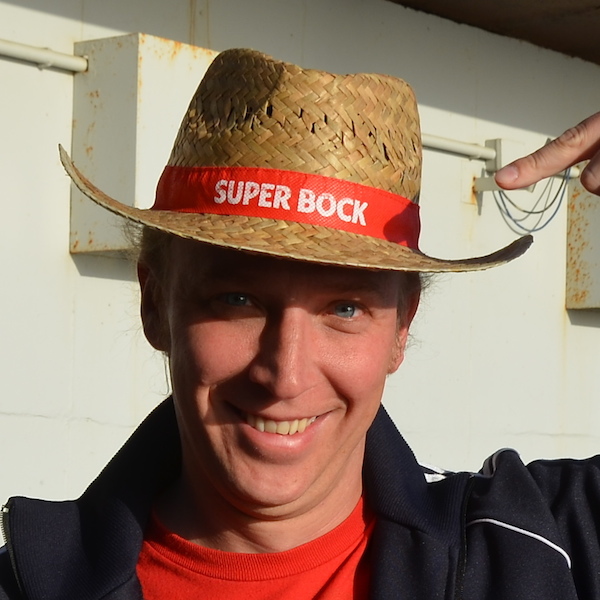
Sebastian Böck
Sebastian Böck received his diploma degree in electrical engineering from the Technical University in Munich in 2010 and is currently a Ph.D candidate at the Department of Computational Perception at the Johannes Kepler University Linz. His research focusses on automatic rhythm and time event series analysis, including beat and downbeat tracking, meter analysis, and tempo estimation. He has a strong interest in artificial neural networks and Bayesian methods.
Tracking microtiming variations in the course of a jazz performance¶
Christian Dittmar, International Audio Laboratories Erlangen, Germany
This contribution aims at tracking the temporal evolution of ensemble microtiming in jazz solos. In particular, the focus is put on the swing ratio implied by the drummer and the soloist, as well as the beat onsets of both musicians and the bassist. To this end, a variant of the recently proposed method for swing ratio estimation is introduced. It is based on pattern recognition in tone onset sequences of the individual musicians. The method allows to display the likelihood of prototypic swing patterns over the course of the complete solo in a spectrogram-like fashion. Dynamic programming is used to track the most plausible trajectory of the swing ratios over time, which leads to interesting insights into the commonalities and differences of the musicians improvising together.
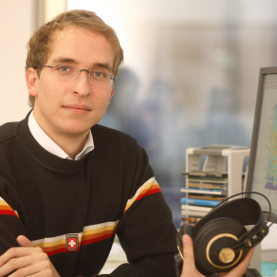
Christian Dittmar
Christian Dittmar studied electrical engineering (Diplom) at the Jena University of Applied Sciences, Germany. After his graduation in 2003, he joined the Fraunhofer Institute for Digital Media Technology (IDMT) in Ilmenau, Germany. From 2006 to 2014, Christian Dittmar was head of the Semantic Music Technology research group at IDMT. He authored and co-authored a number of peer-reviewed papers on music information retrieval topics. His recent research interests include music information retrieval, audio signal processing, and music education applications. Since 2012, he is also CEO and co-founder of Songquito UG, a start-up company responsible for marketing the music education videogame Songs2See. In 2014, Christian Dittmar received the AES Citation Award for his involvement in organizing the 42th and 53th AES International Conference on Semantic Audio. Since summer 2014, Christian Dittmar pursues his PhD thesis in the research group of Meinard Müller at the International Audio Laboratories Erlangen. In 2014, he was nominated as one of the 39 visionaries of the digital society in Germany in 2014 by the Gesellschaft für Informatik. During the 2015 HAMR@ISMIR hackathon, Christian Dittmar achieved the best hack award.
Music similarity and cover song identification: The case of jazz.¶
Simon Dixon, Centre for Digital Music, Queen Mary University of London, UK
Similarity in music is an evasive and subjective concept, yet computational models of similarity are cited as important for addressing tasks such as music recommendation and the management of music collections. Cover song (or version) identification deals with a specific case of music similarity, where the underlying musical work is the same, but its realisation is different in each version, usually involving different performers and differing arrangements of the music, which may vary in instrumentation, form, tempo, key, lyrics or in other aspects of rhythm, melody, harmony and timbre. The new version retains some features of the original recording, and it is usually assumed that the sequential pitch content (corresponding to melody and harmony) is preserved with limited alterations from the original version.
In music information retrieval, a standard approach to version identification uses predominant melody extraction to represent melodic content and chroma features to represent harmonic content. These features are adapted to allow for variation in key or tempo between versions, and a pairwise sequence matching algorithm computes the pairwise similarity between tracks, which can be used to estimate groups of cover songs. Different versions of a jazz standard can be regarded as a set of cover songs, but the identification of such covers is more complicated than for many other styles of music, due to the improvisatory nature of jazz, which allows ornamentation and transformation of the melody as well as substitution of chords in the harmony. We report on experiments on a set of 300 jazz standards using discrete-valued and continuous-valued measures of pairwise predictability between sequences, based on work with a former PhD student, Peter Foster.

Simon Dixon
Simon Dixon is a Reader (Assoc. Prof.), Director of Graduate Studies and Deputy Director of the Centre for Digital Music at Queen Mary University of London. He has a PhD in Computer Science (Sydney) and LMusA diploma in Classical Guitar. His research interests include high-level music signal analysis, computational modelling of musical knowledge, and the study of musical performance. Particular areas of focus include automatic music transcription, beat tracking, audio alignment and analysis of intonation and temperament. He was President (2014-15) of the International Society for Music Information Retrieval (ISMIR), is member of the Editorial Board of the Journal of New Music Research (since 2011), and has published over 150 refereed papers in the area of music informatics.
Using domain knowledge for automatic structure analysis of jazz recordings¶
Stefan Balke, International Audio Laboratories Erlangen, Germany
Analyzing jazz recordings by famous artists is the basis for many tasks in the field of jazz education and musicology. Although jazz music mainly consists of improvised parts, it follows common structures and conventions which allow musicians to play and interact with each other. For example, at jam sessions and on traditional jazz recordings, musicians introduce a song by playing its main melody based on a characteristic harmonic progression. This part is also called the head-in. Afterwards, this progression is repeated while the melody is replaced by improvised solos by the various musicians. After all solos have been played, the song is concluded with another rendition of the main melody, a part also referred to as head-out. Based on this musical knowledge, we investigated automated methods for detecting (approximate) repetitions of the harmonic progression, certain melodic elements, and transitions between soloists as cues to derive a coarse structure of the jazz recording.
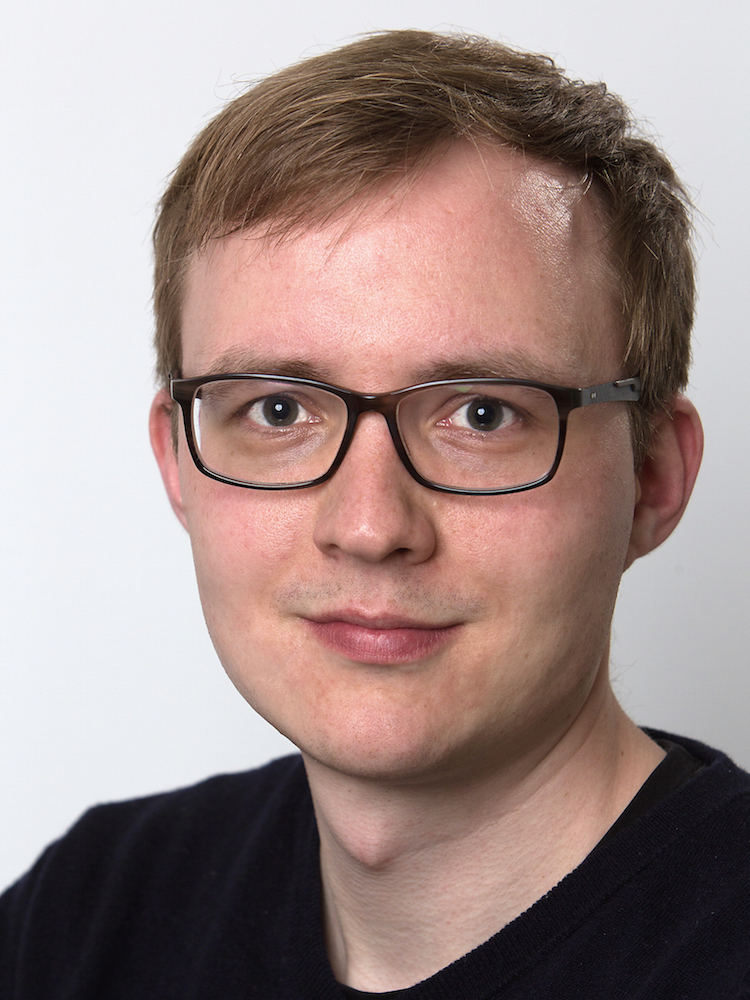
Stefan Balke
Stefan Balke studied electrical engineering at the Leibniz Universität Hannover, Germany. He is currently pursuing a PhD degree in the Semantic Audio Processing Group headed by Prof. Meinard Müller at the International Audio Laboratories Erlangen which are a joint institution of the Friedrich-Alexander-Universität Erlangen-Nürnberg (FAU) and the Fraunhofer-Institut für Integrierte Schaltungen IIS. He has been working as a researcher in the field of music information retrieval since 2014. His research interests are music retrieval and structure analysis for both classical and jazz music. In his spare time, he plays trumpet in several local bands and projects.